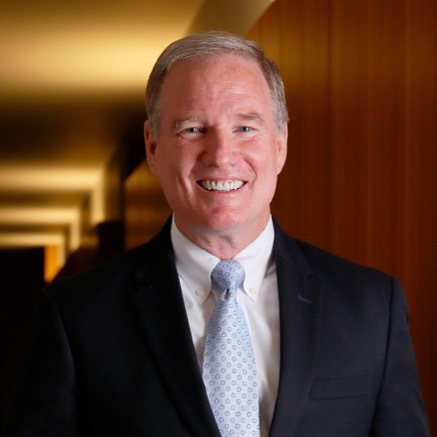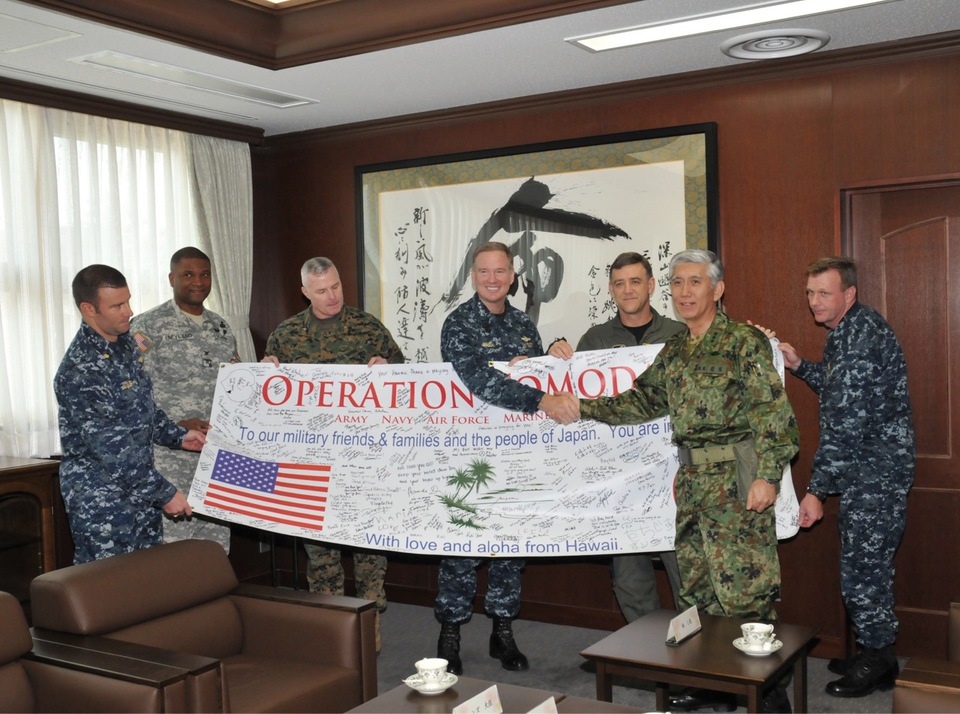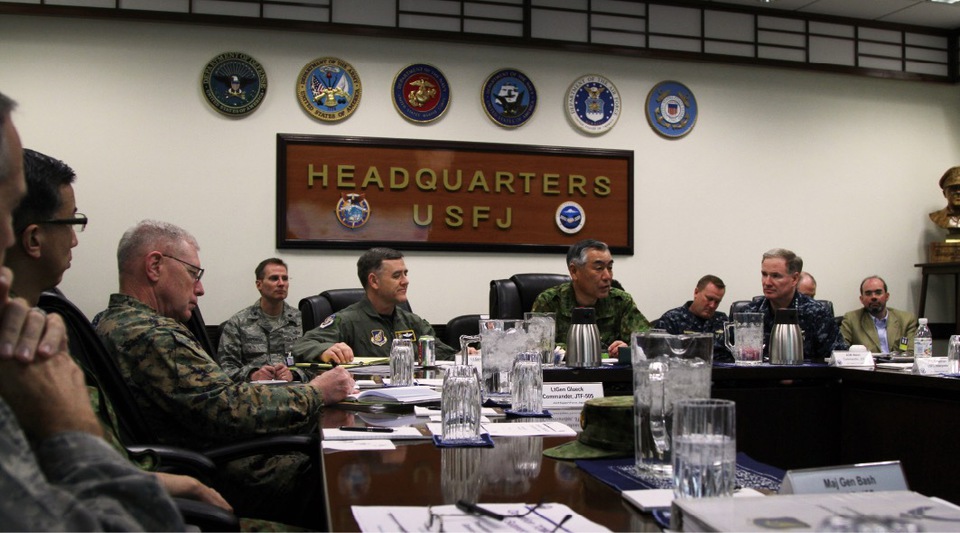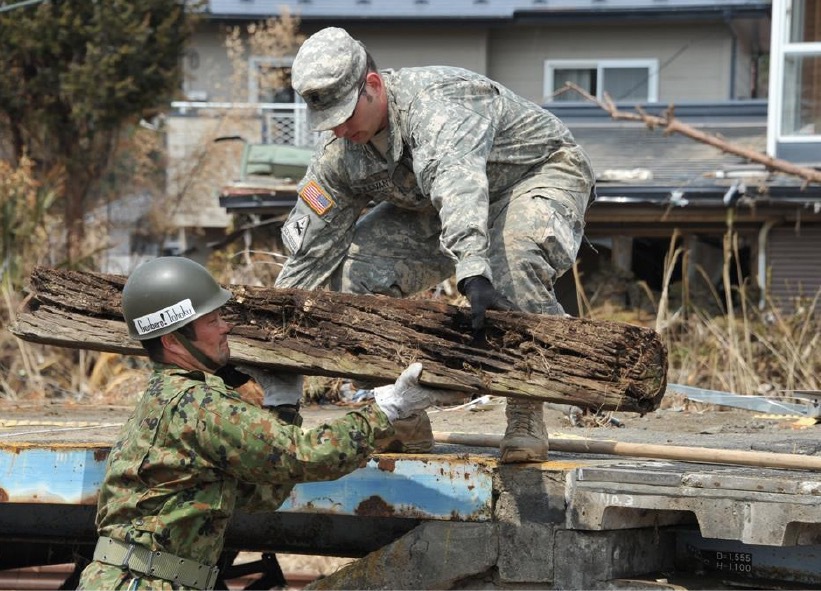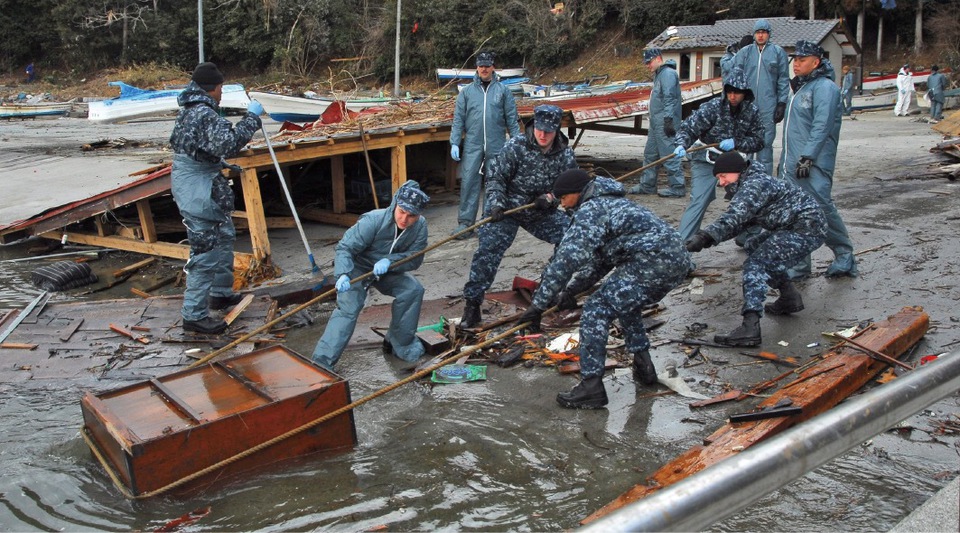Patrick Michael Walsh
Former admiral for the U.S. Pacific Fleet who led “Operation Tomodachi” after the Great East Japan Earthquake.
When the Great East Japan Earthquake of 2011 struck, the U.S. Navy was one of the first organizations to partner with Japan. Commanded by Admiral Patrick Michael Walsh, the U.S. Pacific Fleet went into action under the name “Operation Tomodachi.” Named by a U.S. Armed Forces member who is familiar with Japanese culture—tomodachi means “friend” in Japanese—Operation Tomodachi began just after the earthquake. Working with agencies of the U.S. and Japanese governments, Operation Tomodachi carried out search and rescue missions in earthquake-affected areas. Its members also provided support such as food, shelter and comfort for victims.
Like many people, Admiral Walsh was shocked by the power of the 2011 Earthquake and the destruction it caused. “The damage was beyond imagination—both on land and washing out into the sea,” he said. For victims in Miyagi and Fukushima prefectures, the arrival of Admiral Walsh and his team—even while snow was still falling—was a great relief.
Three years later, Admiral Walsh is still moved by the collaboration and friendship between the United States and Japan during those difficult days. He also recalls the heroism, bravery, and sensitivity of the Japanese people after the disaster.
One of the admiral’s clearest memories was of visiting survivors—including school children and the elderly—in rescue shelters. Some shelters had been created at school. When the admiral and his team arrived, they made their way past rows of shoes that were line up at classroom entrances. “With respect for the victims, we only entered the rooms by invitation,” said Admiral Walsh.
The people in earthquake-affected areas were clearly moved by the admiral and his team’s support. One elderly woman walked up to the admiral and bowed. She held his hand, and would not let go. The admiral felt a deep admiration and respect for her. He was also filled with admiration for the bravery and perseverance shown by search and rescue teams. “In Sendai, we organized the search and rescue team, consisting of U.S. forces, Japan Self-Defense Forces (JSDF) and the local government, and worked together. I was strongly impressed that though some of local members had lost their families or friends, they worked with a strong sense of honor and responsibility in the mission,” he said.
After successfully accomplishing many great deeds, Operation Tomodachi ended in the spring of 2012. The U.S. Pacific Fleet left quietly in order not to disturb the recovery of those affected by the earthquake. However, Japanese people will never forget the warmhearted and friendly assistance provided by the United States. “The operation represents lasting friendship between Japan and the United States,” the admiral said. “It also shows what is possible when nations and people come together to solve difficult problems,” he added.
Now retired, Admiral Walsh maintains his friendship with the Japanese people. With family and friends and other members of the Japan-America Society of Dallas/Fort Worth, the admiral continues to support U.S.-Japan relations. The society, for instance, has carried out campaigns, including donations of comfortable clothing, for people in earthquake-affected areas. Through such efforts, the admiral hopes to ensure the legacy of Operation Tomodachi in the future.
With Commanding General Eiji Kimizuka of the Japan Ground Self- Defense Force North Eastern Army.































































































































